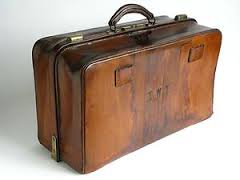 Michael Shermer and Sam Harris got together with an audience at Caltech to beat up on Deepak Chopra and a “storyteller” named Jean Houston in The Future of God debate hosted by ABC News. And Deepak got uncharacteristically angry back behind his crystal-embellished eyewear, especially at Shermer’s assertion that Deepak is just talking “woo-woo.”
Michael Shermer and Sam Harris got together with an audience at Caltech to beat up on Deepak Chopra and a “storyteller” named Jean Houston in The Future of God debate hosted by ABC News. And Deepak got uncharacteristically angry back behind his crystal-embellished eyewear, especially at Shermer’s assertion that Deepak is just talking “woo-woo.”
But is there any basis for the woo-woo that Deepak is weaving? As it turns out, he is building on some fairly impressive work by Stuart Hameroff, MD, of University of Arizona and Sir Roger Penrose of Oxford University. Under development for more than 25 years, this work has most recently been summed up in their 2014 paper, “Consciousness in the universe: A review of the ‘Orch OR’ theory” available for free (but not the commentaries, alas). Deepak was even invited to comment on the paper in Physics of Life Reviews, though the content of his commentary was challenged as being somewhat orthogonal or contradictory to the main argument.
To start somewhere near the beginning, Penrose became obsessed with the limits of computation in the late 80s. The Halting Problem sums up his concerns about the idea that human minds can possibly be isomorphic with computational devices. There seems to be something that allows for breaking free of the limits of “mere” Turing Complete computation to Penrose. Whatever that something is, it should be physical and reside within the structure of the brain itself. Hameroff and Penrose would also like that something to explain consciousness and all of its confusing manifestations, for surely consciousness is part of that brain operation.
Now, to get at some necessary and sufficient sorts of explanations for this new model requires looking at Hameroff’s medical speciality: anesthesiology.… Read the rest






